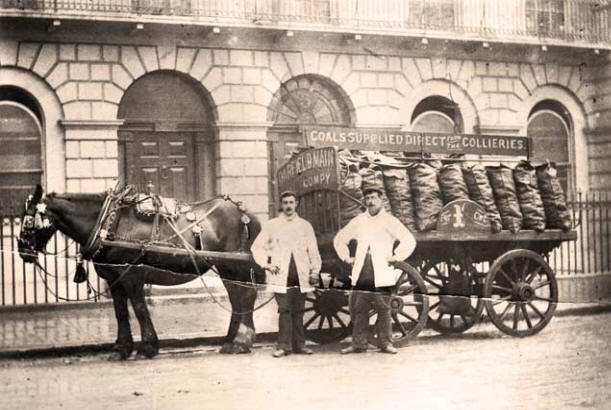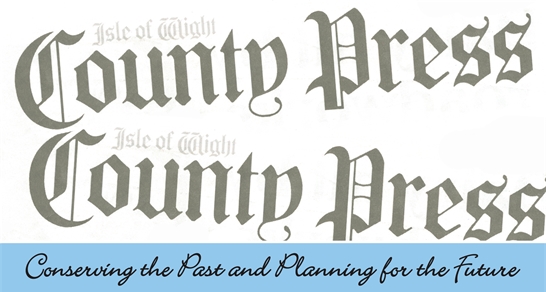February 2025
COAL ARRIVES AND GOES
By Sarah Burdett
Being well into retirement age, as a child I can remember the arrival of the coal man. He would have a leather cap and shoulder pads and be carrying the coal in a large sack on his shoulder. This was tipped into an outhouse across a covered corridor from the back door, so my mother could fetch the coal indoors whatever the weather.

Victorian coal delivery
She had the practical task of cleaning out the fireplace and grate each morning and relaying the fire ready to light later in the day. The ash would be taken outside to the metal dustbin - we didn’t have plastic bins then. Some plastic bins still have the words “No Hot Ashes” imprinted on the top.
If it was frosty the ashes would be spread across the pavement to prevent people slipping. Balls of newspaper were laid on the grate before kindling sticks. Sometimes we had collected dry old fir cones as kindling. If the weather was calm and the fire would not start well, I remember my father holding up a large sheet of newspaper across the whole fireplace only allowing the draught to flow up through the smouldering kindling. Memorable occasions were when the newspaper suddenly caught fire and he had to let it all blow up the chimney!
There was a whole range of employment connected with the import of coal into the Island. Before coal, people used wood, or charcoal. Then coal began to arrive at the Island by ship. Every port on the Island would have its unloading wharves, where the coal merchants would have sheds to store the coal. They bagged up the coal into sacks and took it to their customers by horse and cart.
With the arrival of the railways on the Island in 1864, not only was it easier to transport coal and other goods, but also the demand for coal increased. The railway engines themselves needed coal. In 1877 the Medina coal wharf was set up at West Cowes, with its own sidings linking to the railway system. There was another at St Helens. Then more coal hungry industrial processes were set up.
Gas produced from heating coal was fed to more and more homes for lighting and later for cooking. At first small gasworks were set up in every town, and at a later date combined in a central Gas works at East Cowes which had its own wharf where coal could be delivered directly by ship. Brickworks had been using gorse, wood or charcoal to fire their bricks, but with the coming of the railways many new brickyards were located alongside the railway line.
Then coal could be delivered easily. Steam power to run machines depended on burning fuel – so again coal was delivered by rail wherever possible. Production of electricity depended on coal, with small generating houses in every town. Again, East Cowes later saw the joint Power Station for the whole Island, sharing an extended coal wharf beside the Medina with the Gasworks.
Since the 1970s our use of coal has dropped away almost to nothing. Havenstreet Railway source the coal for their steam engines from other countries – unable to obtain the Welsh coal for which the engines had been designed. Our gas works ceased when North Sea oil arrived in the 1970s. The power station went over to running on North Sea gas. No more coal was needed there.
Electric power was introduced instead of steam power in heavy industries such as the shipbuilding yards and brickmaking, the last brickyard on the Island on the Island, Rookley, closing in 1974.
In the home, coal has given way to gas and electricity. The turn of a switch to cleaner fuels instead of hours of labour is the norm. Our only problem now is converting to the next generation of heating and power to save the planet from the deadly emissions of burning fossil fuels. We must change our habits once again, and quickly.
[Go Back]

